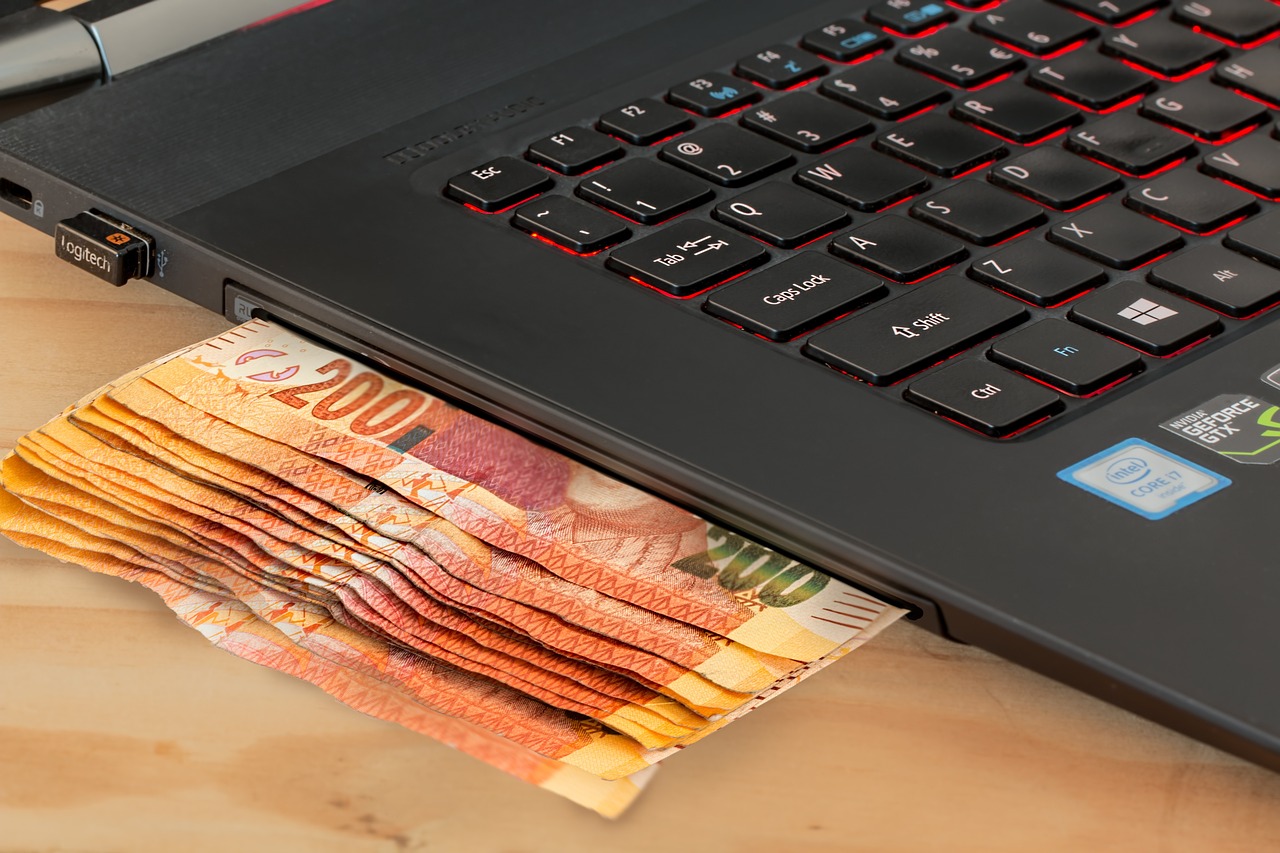Discover the Ins and Outs of Sending Money to Rural Areas in the Philippines: A Comprehensive Guide
GPT_Global - 2024-01-17 18:30:07.0 565
Are there any differences in the process of sending money to rural areas in the Philippines?
According to the World Bank, the Philippines is one of the top recipients of remittances in the world, with a significant portion of these funds being sent to rural areas. However, the process of sending money to rural areas in the country may differ from urban areas. Here are some of the key differences to keep in mind when sending money to rural areas in the Philippines. 1. Limited access to banking services One of the main challenges when sending money to rural areas in the Philippines is the limited access to banking services. Many rural areas do not have banks or ATMs, making it difficult for residents to receive remittance payments through traditional means. This is why alternative options such as money transfer services are often preferred by those living in rural areas. 2. Higher remittance fees Due to the lack of banking infrastructure in rural areas, remittance providers may charge higher fees for transferring money to these areas compared to urban ones. This is because they need to cover the costs of traveling to remote locations and providing cash-out services. It's important to compare fees and rates before choosing a remittance provider to ensure you get the best value for your money. 3. Cash pick-up is the preferred method In rural areas where there are no banks or ATMs, cash pick-up is the most popular method for receiving remittances. This means that the recipient will have to physically go to a designated location to collect their money. It's important to make sure that the chosen remittance provider has a wide network of cash pick-up locations in the recipient's area to ensure convenience and accessibility. 4. Longer processing times Sending money to rural areas may also take longer to process compared to urban areas. This is because remittance providers may need to coordinate with their partners and agents in the rural areas to facilitate the cash pick-up process. It's important to plan ahead and allow for a few extra days when sending money to rural areas to avoid any delays. In conclusion, there are several differences in the process of sending money to rural areas in the Philippines compared to urban areas. These include limited access to banking services, higher remittance fees, cash pick-up as the preferred method, and longer processing times. Understanding these differences can help you make informed decisions when sending money to your loved ones in rural areas and ensure a smooth and hassle-free transaction.
What should I do if there is an issue with my money transfer to the Philippines?
Sending money to the Philippines is now easier than ever thanks to remittance businesses. However, there may be times when you encounter issues with your money transfer. Here's what you can do if you find yourself facing such a situation.
First and foremost, stay calm and don't panic. Remember that remittance businesses have strict protocols in place to ensure the safety and security of your money. Take a deep breath and contact the company's customer service immediately.
Explain the issue clearly and provide any relevant information such as your transaction number or receipt. The customer service representative will work with you to resolve the issue as quickly as possible.
If the issue cannot be resolved over the phone, find out if there is a physical location where you can speak to a representative in person. This may be especially beneficial if there was an error in the recipient's information or if you need to cancel the transaction altogether.
Keep all documentation related to the money transfer, including receipts and transaction records. These can come in handy if you need to file a complaint or dispute a charge.
If the issue is not resolved to your satisfaction, you can escalate it to a higher authority within the remittance company or file a complaint with the appropriate regulatory agency. Most remittance businesses are regulated by government agencies to ensure fair practices and protect consumers.
Lastly, always make sure to use reputable and trustworthy remittance businesses for your transactions. This reduces the chances of encountering issues and ensures that your money reaches its intended recipient safely.
By following these steps, you can effectively handle any issues that may arise with your money transfer to the Philippines. Remember to stay calm, communicate clearly, and keep all necessary documentation. With reliable remittance services, sending money to your loved ones in the Philippines will always be a hassle-free experience.
Are there any rewards or loyalty programs for frequent senders to the Philippines?
The remittance business is a popular way for people living abroad to send money back home to their loved ones in the Philippines. With so many options available, it can be hard to decide which remittance service to use. For frequent senders, it's important to know if there are any rewards or loyalty programs that can benefit you in the long run.
Fortunately, many remittance companies offer rewards and loyalty programs for their most loyal customers. These programs often come with various perks such as discounted fees, free transfers, and even cashback incentives. Some companies also have point systems where you can accumulate points for each transaction and redeem them for prizes or discounts on future transfers.
These rewards and loyalty programs are designed to both incentivize customers to continue using their service and to show appreciation for their loyalty. It's a win-win situation for both the sender and the remittance company. Frequent senders can save money on fees and enjoy other benefits, while the company can retain their loyal customer base.
If you're a frequent sender to the Philippines, it's worth researching and comparing different remittance companies to see which one offers the best rewards or loyalty program. Keep in mind that these programs may have certain requirements or restrictions, so be sure to read the terms and conditions carefully.
In addition to rewards and loyalty programs, some remittance companies also offer referral bonuses. This means that if you refer a friend or family member to use the same service, both of you can receive a bonus or discount on your next transfer. This can be a great way to save even more money on your remittance transactions and also help out your loved ones by introducing them to a secure and reliable remittance service.
In conclusion, if you're a frequent sender to the Philippines, it's worth looking into rewards and loyalty programs offered by remittance companies. Not only can you save money and enjoy other benefits, but you'll also feel appreciated for your loyalty. With so many options available, be sure to compare and choose the one that best fits your needs and offers the most attractive rewards program.
Can I send money to someone in the Philippines without them having a bank account?
Sending money to someone in the Philippines is possible even if they do not have a bank account. This is made possible through remittance services offered by various companies. Remittance refers to the transfer of money from one country to another, usually done by foreign workers to support their families back home. With the advancements in technology, sending money to the Philippines has become easier and more convenient. One option is to use money transfer services such as Western Union or MoneyGram. These companies have branches all over the world and have partnered with numerous banks and retail outlets in the Philippines to provide quick and secure money transfers. Another option is to use online remittance services such as Xoom or Remitly. These services allow you to send money directly to your recipient's mobile wallet or pick it up at designated locations. They also offer competitive exchange rates and low transaction fees. For those who prefer more traditional methods, you can also send money through the mail. However, this is not recommended as it poses a higher risk for loss or theft of the money. Before sending money, make sure to inquire about the fees and exchange rates offered by different providers. It's also important to provide accurate information about your recipient to avoid any delays or issues with the transaction. In summary, sending money to the Philippines without a bank account is possible through various remittance services. Make sure to compare rates and choose a reliable provider to ensure a smooth and secure transfer.Are there any age restrictions when sending money to the Philippines?
Remittance businesses are a popular option for people who want to send money to the Philippines from other countries. Whether it's for family support, business transactions, or personal reasons, sending money through a remittance service is a convenient and efficient way to transfer funds. However, one question that often comes up is whether there are any age restrictions when sending money to the Philippines.
The short answer is no, there are no age restrictions for sending money to the Philippines. As long as you have the necessary documents and information, anyone can use a remittance service to transfer funds. This means that minors can also send and receive money with the help of their parents or guardians.
However, it's important to note that some remittance services may have their own policies regarding age restrictions. This could be due to security measures, compliance with regulations, or other factors. So even though there are no specific age restrictions, it's best to check with the specific remittance company you plan to use to ensure that there won't be any issues when sending or receiving money.
Another thing to consider is that minors may need a parent or guardian to co-sign the transaction or provide permission before sending or receiving money. This is to protect both parties and ensure that all parties involved are aware and agree to the transaction being made.
Overall, there are no major age restrictions when it comes to sending money to the Philippines through a remittance service. However, it's always best to check with the specific company you plan to use and make sure you have all the necessary documentation and permissions in place before making a transaction. With the right preparation and understanding, sending and receiving money through a remittance service can be a smooth and hassle-free process.
Can I use a prepaid card to send money to the Philippines?
If you are looking for a convenient and affordable way to send money to the Philippines, using a prepaid card may be an option worth considering. Prepaid cards have become increasingly popular in recent years, offering users a convenient and secure way to make purchases and transactions without the need for a traditional bank account. But can you use a prepaid card to send money to the Philippines? Let's find out.
The short answer is yes, you can use a prepaid card to send money to the Philippines. Many remittance businesses now offer the option to load funds onto a prepaid card and transfer those funds internationally. This allows recipients in the Philippines to receive the funds directly onto their card, which they can then use to withdraw cash or make purchases.
Using a prepaid card for international remittances can have several benefits. For one, it is often a more affordable option than traditional bank transfers that may incur high fees and exchange rates. Prepaid cards also offer the convenience of being able to load funds online and easily track transactions.
However, before using a prepaid card for remittances, it is important to carefully compare the fees and exchange rates offered by different providers. Some prepaid cards may have higher fees or less favorable exchange rates, so doing some research beforehand can help you find the best deal.
Another important consideration is the security of your funds. Make sure to choose a reputable remittance business that offers robust security measures to protect your money during the transfer process. It is also advisable to only use prepaid cards that are FDIC-insured to ensure the safety of your funds.
In conclusion, using a prepaid card to send money to the Philippines is a viable and convenient option for international remittances. Just be sure to compare fees and exchange rates, choose a reputable provider, and prioritize the security of your funds. With these precautions in mind, you can send money to your loved ones in the Philippines quickly, easily, and affordably.
Is it possible to send money to the Philippines without an internet connection?
Remittance businesses have become a crucial means for people in different countries to send and receive money from their loved ones. However, many people wonder if it is possible to send money to the Philippines without an internet connection. The answer is yes, it is possible.
One of the traditional methods of sending money to the Philippines without an internet connection is through bank transfers. Many banks offer international transfer services that allow you to send money directly to a Philippine bank account. You can do this by visiting your local bank branch and providing the necessary information and fees for the transaction.
Another option is through money transfer companies such as Western Union or MoneyGram. These companies have physical locations all over the world, including the Philippines, where you can send money even without an internet connection. All you need to do is visit one of their locations, fill out the necessary forms, and provide the recipient's information. Your loved ones can then pick up the money at any of the designated locations in the Philippines.
Some remittance businesses also offer a telephone transfer service, which allows you to send money to the Philippines over the phone. This method requires you to call the company's customer service hotline and provide them with the necessary information and payment details. The recipient can then collect the money at a designated location or have it delivered to their doorstep.
For those who do not have access to a bank account or live in remote areas without money transfer locations, there are still ways to send money to the Philippines without an internet connection. You can use postal money orders, which can be purchased at post offices and sent via mail to the recipient's address. However, this method may take longer to process and may incur additional fees.
In conclusion, there are various ways to send money to the Philippines without an internet connection. Whether through bank transfers, money transfer companies, telephone transfers, or postal money orders, these methods provide a convenient and reliable means for remittance. It's always best to research and compare different options to find the most affordable and efficient way to send money to your loved ones in the Philippines.
Do I need to disclose the purpose of the money transfer to the Philippines?
When sending money to the Philippines, it's important to be aware of the regulations and requirements surrounding money transfers. One common question that arises is whether or not it is necessary to disclose the purpose of the transfer.
In short, the answer is yes. When sending money to the Philippines, you will be required to provide a reason for the transfer. This is to ensure that the funds being transferred are legitimate and not associated with any illegal activities such as money laundering or terrorism.
The purpose of the transfer can range from sending money for family support, paying for education or medical expenses, or even buying property in the Philippines. Whatever the reason may be, it is important to provide accurate and honest information to avoid any delays or complications with the transfer.
Additionally, disclosing the purpose of the transfer also helps with the tracking and monitoring of the funds. This is a precautionary measure to prevent any misuse of the money and to ensure that it reaches the intended recipient.
If you are unsure about what reason to provide for the transfer, simply state the general purpose such as "family support" or "personal expenses." It is also important to note that providing false information or trying to conceal the purpose of the transfer can result in serious legal consequences.
In conclusion, disclosing the purpose of a money transfer to the Philippines is a necessary step in the process. It helps to ensure the safety and legitimacy of the transfer and contributes to the overall security of the financial system. So, always be truthful and accurate when providing information for your remittance transactions.
About Panda Remit
Panda Remit is committed to providing global users with more convenient, safe, reliable, and affordable online cross-border remittance services。
International remittance services from more than 30 countries/regions around the world are now available: including Japan, Hong Kong, Europe, the United States, Australia, and other markets, and are recognized and trusted by millions of users around the world.
Visit Panda Remit Official Website or Download PandaRemit App, to learn more about remittance info.



